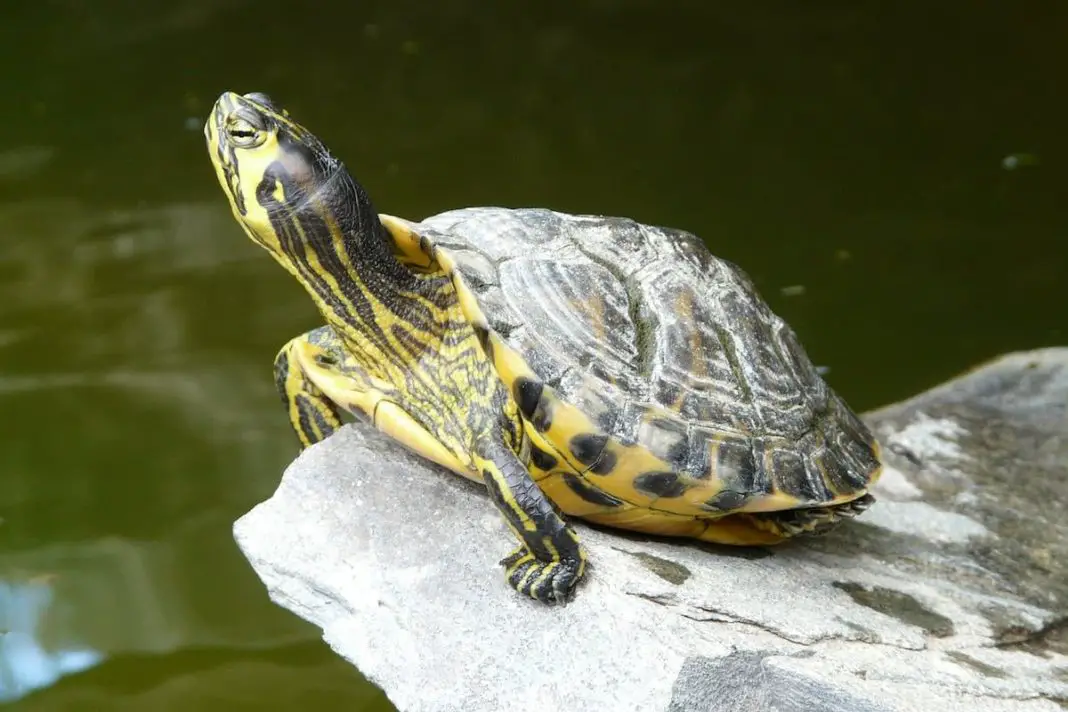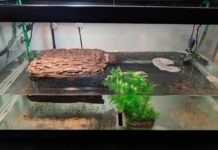There may come a time when owning turtles where you’ll want or need to divide your tank. You may want to consider building your own tank divider.
One problem that you may have a problem with when keeping turtles is dealing with some aggressive behavior. Whether it’s because of overcrowding or simply aggressive nature, you may at some point find yourself with a hostile turtle on your hands. When one of the turtles in your tank is attacking or antagonizing others, it can create a very stressful environment. Rather than having to get rid of the aggressive turtle entirely or set up a new tank, there’s a solution where you can install a tank divider to separate the aggressive turtles from the others. Although you can find a tank divider at your local pet store or online, you may want a customized fit divider for your tank.
Using A Tank Divider For Turtles
Tank dividers can be used for more than just separating aggressive turtles – they’re also a great way to safely separate adult turtles from younger turtles. If you decide to breed your turtles but don’t have an extra tank to use, you can simply install and use a tank divider to keep the adult turtles from the younger ones. Dividers can also be used to separate a breeding pair from other tank inhabitants during the breeding process.
Tank dividers can also be used to separate an injured turtle from the rest of the tank inhabits in order to give the injured turtle time and space to heal. The main benefit of a tank divider is that it provides a physical barrier for turtles, but it also allows water to flow from one side of the tank to the other. So by using a tank divider, you can simply divide one tank into two sections, making use of the same equipment.
Pros And Cons Of Tank Dividers
Tank dividers are great for a variety of purposes for tanks that keep turtles, however, it doesn’t mean that they’re always the right choice. Below, you’ll find a list of pros and cons for tank dividers that’ll help you to determine whether using a tank divider is the right choice for your situation:
Pros:
- A tank divider saves you from needing to always set up a separate tank
- Tank dividers allow water to pass through so you won’t need to install any additional tank equipment
- A tank divider gives you a simple way to separate aggressive turtles from the other turtles in the tank without having to buy a new tank or get rid of the aggressive turtle
Cons:
- Although water can flow through a tank divider may not always be consistent – the water quality on one side of the divider could be better because the filter’s closer
- Water temperature could vary on either side of the tank divider due to the heater being closer to one side
- As tank dividers break up the tank, it can sometimes detract from the aesthetic appearance of the tank
Making Your Own Tank Divider
If you’ve considered the pros and cons of tank dividers and you’ve decided that it’s the right solution for your situation, you can follow the steps below to make your own divider. Depending on the size of your tank, making a tank divider can be less expensive than purchasing one – this is especially true if your tank is an odd size. However, if your tank is a standard size, it may be easier and more cost-effective to just buy a tank divider.
Materials Required:
- Plastic embroidery canvas
- Slide-on plastic binder bars
- Measuring tape
- Scissors
Instructions:
1. Use the measuring tape, to measure the width of your tank from the inside edge of the back wall to the inside edge of the front wall.
2. Cut a sheet of plastic embroidery canvas to the width measured in the previous step. You’ll probably find it helpful to trace a line down the length of the plastic embroidery canvas to ensure a straighter cut.
3. Measure the height of your tank from the base to about 1 inch from the rim of the tank, then cut the sheet of plastic embroidery canvas to this height.
4. Trim two slide-on plastic binder bars to the width of the plastic embroidery canvas and two more to the height of the canvas. Slide the bars onto the corresponding edges.
5. Remove the substrate from your tank where you intend to install the tank divider, creating a trench in the gravel to expose the bottom of the tank.
6. Slide the tank divider vertically into the tank between the back and front walls, placing the bottom edge inside the trench you just dug. The divider should be snug against the tank’s walls on either side and it should sit level on the bottom of the tank.
7. Check the height of the divider against the water level in your tank – the divider needs to be taller than the water level to ensure that the turtles can’t swim from one side of the tank to the other.
8. Fill in the substrate on both sides, so that it holds the tank divider in place.
Other Tips And Tricks
The key to ensuring that your tank divider acts as a successful barrier is to install it correctly. Make sure that the sides of the divider are snug against the tank’s walls and bury the bottom of the divider in the substrate to make sure that the turtles won’t be able to swim under it.
Something else to consider when installing your tank’s divider is the proximity to the heater and filter. While water should be able to flow freely from one side of the tank to the other, the side that’s furthest from your tank’s equipment may not receive equal filtration. So, to ensure that both sides of your tank benefit from good water quality, consider moving the filter closer to the middle of the tank. Keep in mind that as the water will flow from one side of the barrier to the other, tank dividers aren’t a good way to separate sick turtles.
Conclusion
A tank divider is a simple and effective way to separate the turtles in your tank, should you ever need to. Not only is this solution quite easy to implement, but it’s also something you can make on your own.








